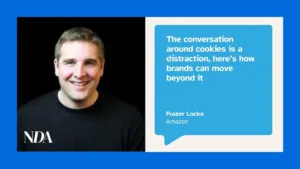by Clare Beddow, head of commercial strategy, MiQ
As media professionals, we are in a privileged position. We earn salaries that are generally above the average for our demographic. As media professionals, we should recognise this, looking beyond our ‘media bubble’ when we plan campaigns to take into account the social and economic situations of our audiences. At a time when there’s a deepening cost-of-living crisis, this has never been more important.
If we step out of our media bubble for a moment, we are sure to find a UK population that earns an average annual household income of £31,000. More importantly, rising inflation means the disposable part of this income is shrinking.
There’s no better sign of the effects of this than in media itself. Up until recently, subscriptions to Netflix, Prime and Disney were growing. Suddenly, they are falling through the floor. The 6% of the average disposable household income accessing a good selection of Subscription Video-on-Demand channels takes up is increasingly becoming unsustainable as that disposable income reduces in size.
Yes, the shift to Advertising-led Video on Demand was already on the horizon as the market reached subscription saturation point. But the cost-of-living crisis has definitely pushed Netflix and its rivals to turn to ad revenue more quickly than would have been the case.
People are struggling to afford childcare, for goodness sake, and finding it increasingly difficult to put food on the table, along with other essentials. No wonder some popular subscription services are increasingly not an option. Furthermore, the last thing consumers need is for their precarious financial position to be rubbed in their faces by being shown an ad for a luxury holiday or encouraging them to buy a new car or expensive perfume.
Not only is this clearly ineffective from an advertising perspective, it’s also likely to damage brand perceptions, putting viewers off those responsible. Or should that be irresponsible?
What, no ad budget
Of course, advertisers are suffering too. As consumers spend less, revenues fall, and usually the first thing to be cut is ad budget. We can talk all day about why this is a false economy, but maybe if we worked with brands more to prove the worth of their ad spend and develop better targeting to increase effectiveness, we probably wouldn’t need to. The good news – yes, there is some – is that the industry is evolving. With Connected TV and the right data comes the ability to deliver ads far more accurately to the desired audience in the right place at the right time.
Programmatic agencies are forging valuable partnerships that are continually enriching and refining the data they offer advertisers, embracing innovations like automatic content recognition. Brands can also now coordinate the planning and execution of their programmatic TV advertising campaigns seamlessly and simultaneously across all linear and digital channels, regardless of platform, through a single point of access. This offers brands better planning, activations and measurement across digital channels, including YouTube and the whole connected TV estate. This means marketers are increasingly able to measure incremental reach, as well as over-exposed and under-exposed audiences to ensure they are not reaching the same customers across different platforms. Something that’s vital with 90% of linear TV impressions reaching the same 55% of UK households.
The right message
The technology is out there. So, we need to take a more targeted approach to our advertising by tapping into the growing audience that Connected TV is attracting and the greater accuracy it enables. It will help us to ensure we send the right messages to the right people at the right time, minimising the chances of serving up inappropriate ads that are more likely to damage a brand than promote it.
We can also drive more efficient and effective campaigns, generating more return for ad spend at a time when budgets are tight, while optimising sales and revenues. As an industry, sadly we can’t solve the cost-of-living crisis. But by working together we can help brands tread carefully so they are seen to be respectful and aware of what’s going on in the real world and the pressure their customers are under. Simultaneously helping their ad spend go further.








